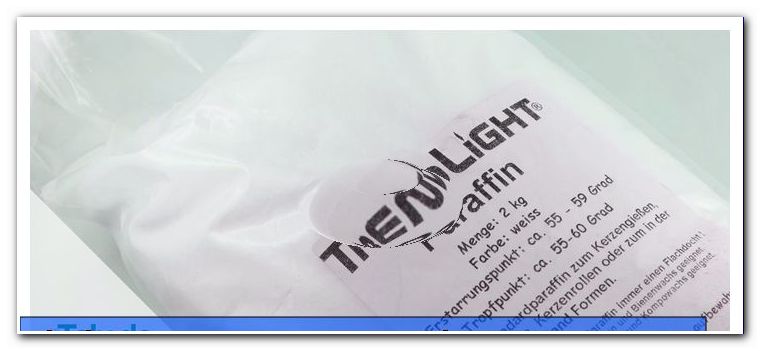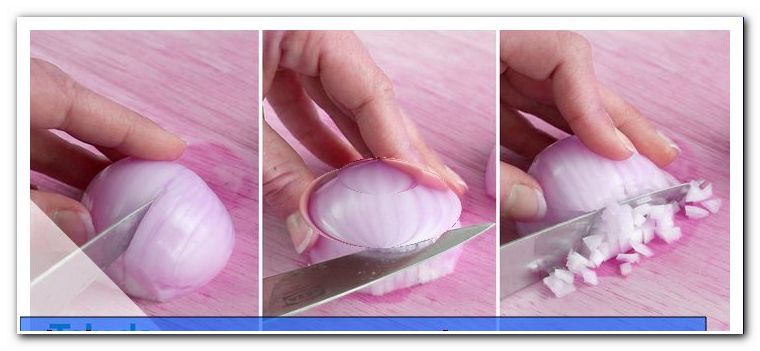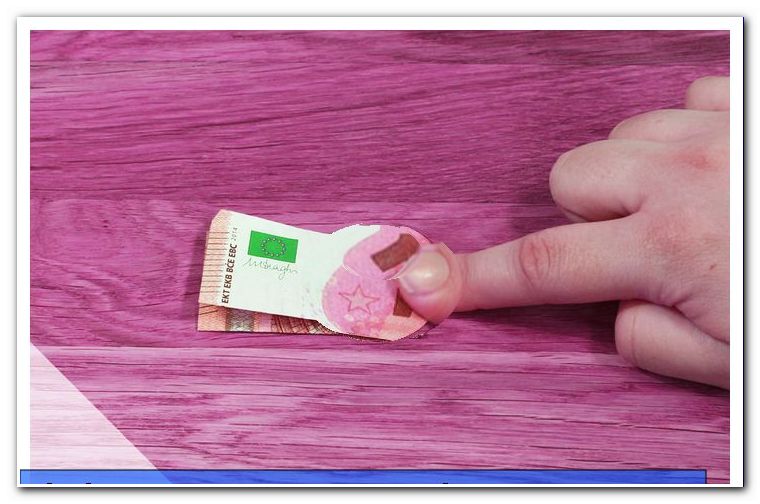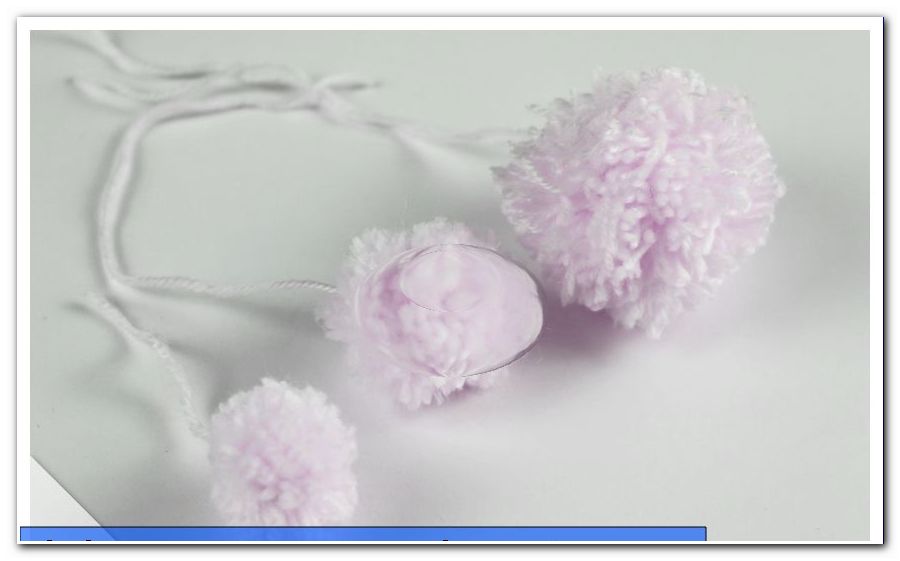Make candles yourself from old candles and leftovers - instructions

- Material and preparation for the candle casting
- Notes on candle wax
- Notes on the wick
- Notes on the candle shapes
- Instructions: pour candles
- preparation
- Pour candle wax
- Variations in candle casting
It rains outside, it storms or the first snowflakes fall from the sky ">
There are different ways and methods how to make candles yourself - this includes candle pulling, candle casting or candle dipping. But for beginners among the candle makers casting is the faster and easier option. Therefore, we also recommend this method for crafting with your children. You will see, candle-casting with your children can quickly become an annual tradition.
If you are still interested in candle pulling, you will find the appropriate instructions here: //www.zhonyingli.com/anleitung-kerzenziehen/
Material and preparation for the candle casting
If you want to pour candles yourself, you will need some preparation time and some, but fairly affordable materials:
- Wax residues or candle wax granules
- candlewick
- Molds for filling
- Saucepan with water
- small, heatable bowl
- possibly wax color, crayons or dried flowers
- scissors
- Wooden sticks or roulade skewer
Notes on candle wax
Making DIY candles is cheap and fast, and you can turn old candles into new ones. Often you have small candle stumps left, which also do not look nice. Then you should not just throw them away, but keep them for rainy days to make them from new candles.

If you have virtually no wax residue in the house, you can buy candle wax. Beeswax, candle wax granules and sterain are the best-known candle waxes that you can use for candle-casting. Beeswax is soft, easy to process and bend when heat is applied. The paraffin-based granules, on the other hand, are extracted from crude oil and melt at 54 ° C. Stearin serves more as an additive and can be added to the wax granules up to 20%. This makes the candle harder and whiter. The candle can also burn longer, since the melting point is then 56 ° C.

Notes on the wick
The wick of the candle burns once and must therefore be replaced. One differentiates in the specialized trade between the flat and Runddocht. The latter contains a problem in itself. When processing the round hole care must be taken to ensure the running direction while the flat wick can be lighted on both sides. We therefore recommend the flat wick, which is also suitable for all types of wax.

You should also pay attention to the thickness of the wick. This depends on the diameter of the candle you want to pour. Therefore, pay attention to the manufacturer's instructions on the wick packaging. These recommend, for example:
- Candle diameter: 3.5 cm to 4.5 cm → 3x14 / 3x16 gauge wick
- Candle diameter: 6 cm to 8 cm → 3x24 / 3x30 wick
Making candle wick yourself: If you do not want to buy candle wick, you can do it yourself. Simply place a piece of twine with the desired length of candle and some addition to tying in liquid wax, remove and hang to dry. The soaked thread can then run off slower later.
Notes on the candle shapes
You can pour candle wax into almost any container - but this should either be heat resistant, bendable, or easily broken to remove the candle. Let your creativity run wild: pour candles, for example, into small silicone molds, decorative jars, cardboard rolls (which can later be detached from the wax and broken), cut-up beverage cartons, tin cans, orange peels, shells, egg shells and much more. If you let your gaze wander through your household, you will surely discover some decorative shapes and future candle figures.

Instructions: pour candles
Now you have all the materials together, you can start.
preparation
Step 1: If you have wax residues that you want to process, you should sort them by color and crush them. Wax granules, however, as the name implies, is already shredded wax. Free the old wax from wicking residues and dirt.

Step 2: Now heat the wax in a water bath over low to medium heat. To do this, place a pot of water on the stove and drape a bowl of wax inside. As with the melting of chocolate, the wax slowly becomes liquid.

Tip: Measure the amount of wax with the mold - you need about 1 1/2 times the amount of the mold.
Step 3: While the wax melts, prepare the mold. In forms where the candles stay in later, you do not need to worry about anything except that they are heat resistant. Cardboard or sheet forms are released after drying out of the candle.

Take, for example, an old beverage carton and shorten it to the desired height. For the wick you prick a hole in the ground with the roulade needle. The wick is now pulled through the hole and tied at the top of the wooden skewer. This holds, laid on the edge, the wick in the middle. With a small lump of wax, which you kneaded well beforehand, close the small hole from the inside.
If you want to pour wax into paper rolls from toilet paper, you will need sand. This is spread in a shallow dish or in a baking tray. Then set up the cardboard cylinder with the wick at the top and bottom, which you attach to a wooden skewer on both sides, upright in sand. So the liquid wax can not flow out below.
Pour candle wax
Step 4: Now that the wax has completely melted, take the bowl out of the water bath. You can not burn yourself with a glove. First pour only a small layer into the mold to close all possible leaks. Now wait until this layer is dry.

Afterwards, the mold can be completely filled with wax.
Step 5: Now it's time to wait. Because only when the wax has dried completely, the mold can be loosened carefully. If this does not work out smoothly, there is a trick. Put the mold in the fridge. The cold causes the wax to contract even further.
You can simply tear off cardboard molds carefully and release them from the candle.
Step 6: Now you just have to cut off the wick and you're done with a homemade candle!

Variations in candle casting
The basic principle of candle casting is not really complicated. But if you want to bring some color or fragrance into the game, that requires a little more skill.
You can achieve different colors by adding colorful wax colors, which you can buy from specialist retailers. A cheaper, yet productive option is the melting of crayons. The colors are already added to the liquid wax in a water bath. But if you have a little more time, you can also pour different colored layers. Wait for each cast coat of paint until it is already slightly dry. Then simply pour different colored wax on top of it.

Scented candles are created with essential oils. A few drops of oil in the liquid wax are enough to make fragrant candles.

Dried flowers, flowers, slices of orange or other small decorative objects can be embedded in the wax. Do this by lining the interior walls with these flat objects and simply pouring the hot wax over them.
Here are some more tips and inspiration for making scented candles: //www.zhonyingli.com/duftkerzen-selber-machen/
Now you have the tools to pour your own candles. Create your own candles that suit your interior design style or are perfect Christmas gifts. Your kids will love this craft!
Tips for quick readers:
- Sort wax shreds and granules and chop them up
- Make the wick yourself: Soak the twine in wax
- Melt wax in a water bath
- Prepare molds: seal and attach the wick to the wooden spit in the middle
- Pour candles
- get creative: pour layers, inclusions
- make colorful wax with wax colors
- Make scented candles with essential oils
- Remove the candle from the mold or tear off the mold
- Cut off the wick




